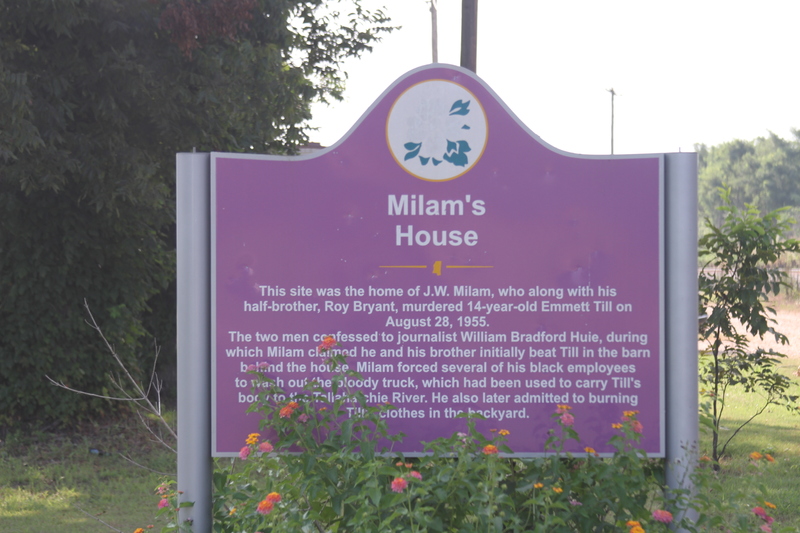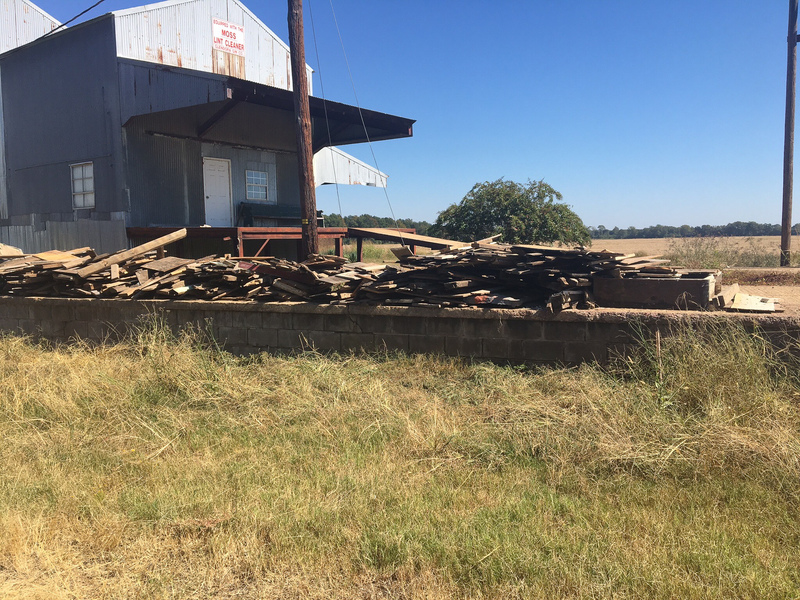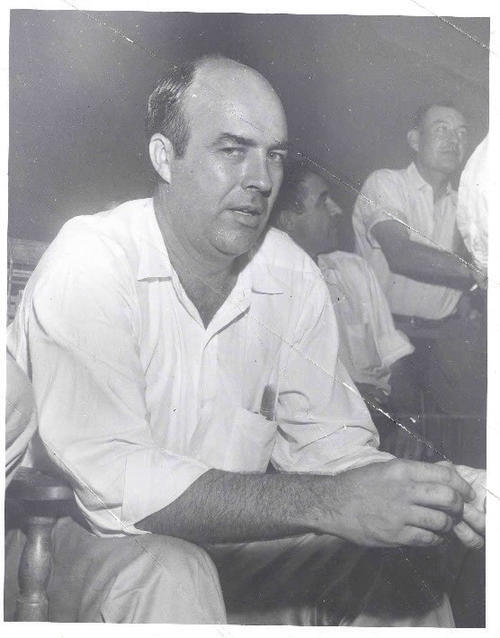
In 2008, the Emmett Till Memorial Commission (ETMC) erected a sign at this spot. Although nothing remains except an overgrown field, in 1955 this was the site of J.W. Milam's home and, critically, his shed.
The sign claims that Till was beaten here in the shed that once stood on this spot. This is not true.
When they wrote this sign, the ETMC was following the story told by LOOK magazine in January of 1956. Titled "The Shocking Story of Approved Killing in Mississippi," the LOOK article was one of the most influential versions of Till's story ever told. And it was virtually 100% false.
Since the murderers had already been acquitted in a court of law, LOOK magazine refused to print the story unless every named participant signed a waiver (see the documents for an example).
In fact, Till was tortured at the Seed Barn on the Milam Plantation in Sunflower County--27 miles west. But the barn was run by Leslie Milam (J.W.'s brother). Leslie did not sign a release form and could not be included in the story. So Huie moved the torture here, to J. W. Milams' shed in Glendora.
Ironically, barely 500 feet west of this sign is another ETMC sign commemorating King's Place, where the black journalist Jimmy Hicks learned about Levi "Too Tight" Collins and Henry Lee Loggins. But Collins and Loggins are only involved if the torture happened in Sunflower County. This means that the two signs, both erected by the ETMC in 2008, are mutually exclusive.
If Collins and Loggins were key witnesses, then King’s Place is a historic site but Milam’s shed is not. Alternately, if Milam’s shed is a historic site, then Collins and Loggins were red herrings and King’s Place was the site where the black press lost the story.
Images



Documents
| Name | Info | Actions |
|---|---|---|
| Release form written by LOOK magazine, signed by murderer J. W. Milam, annotated by Dave Tell. | pdf / 530.69 kB | Download |
| Tallahatchie Civil Rights Driving Tour | pdf / 854.33 kB | Download |